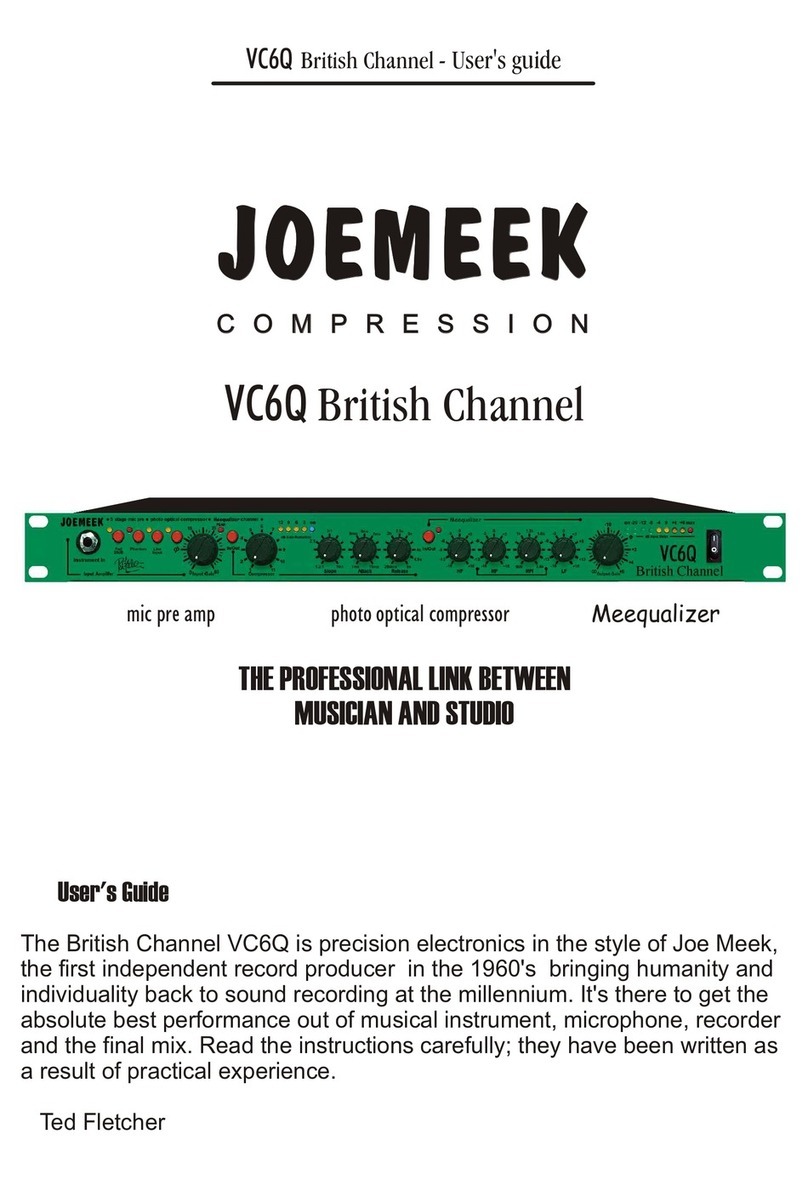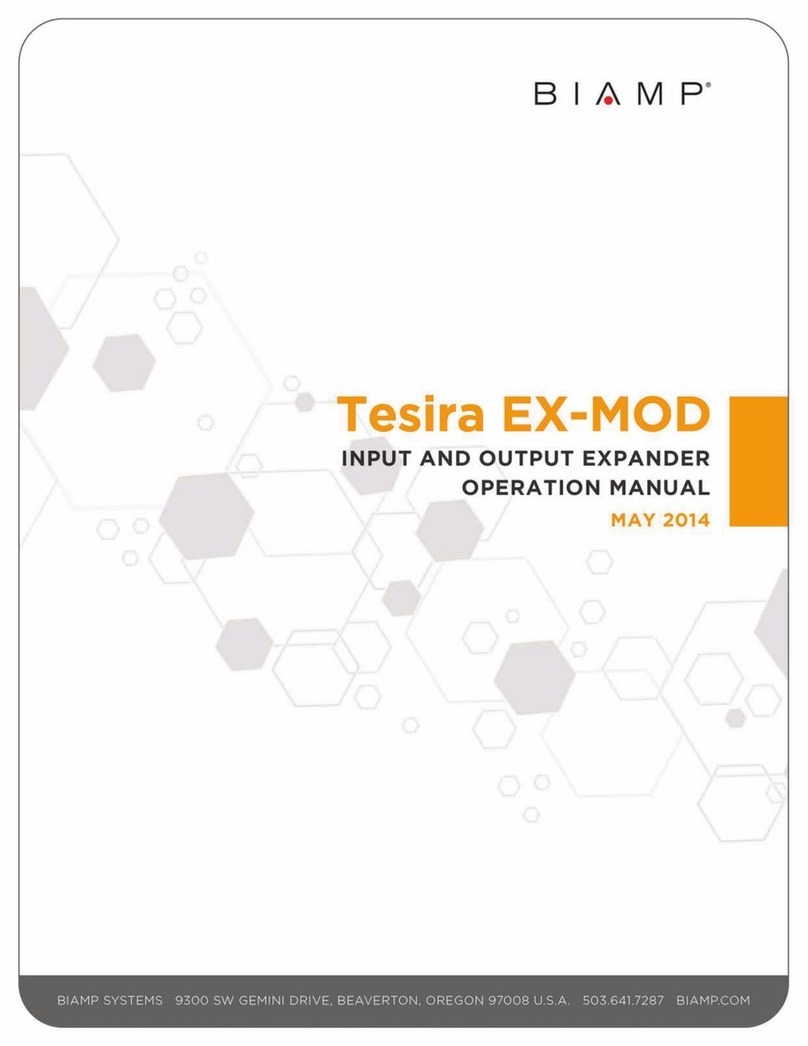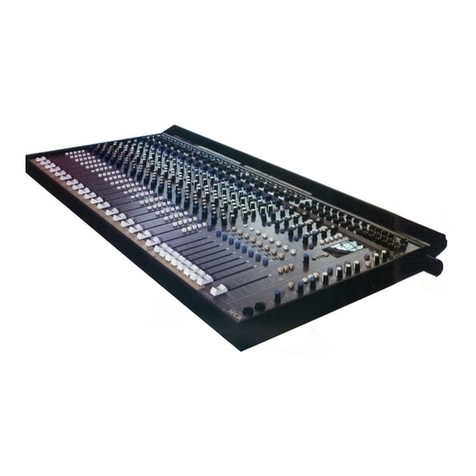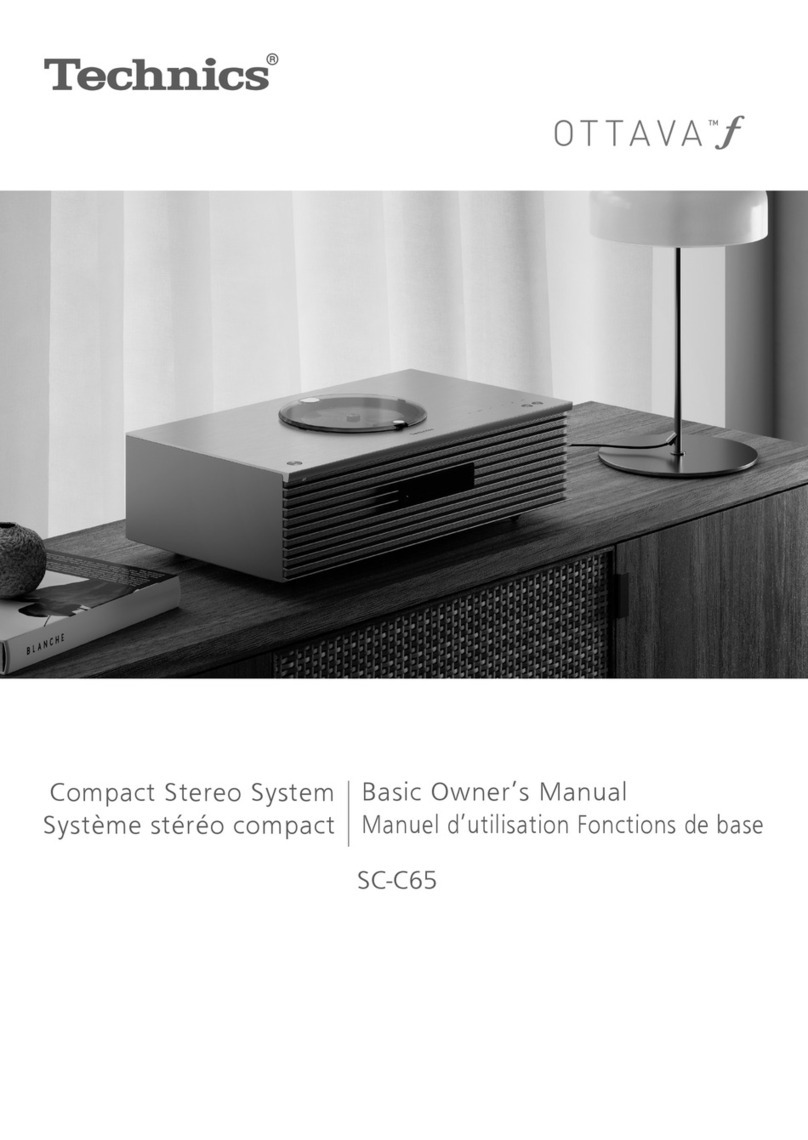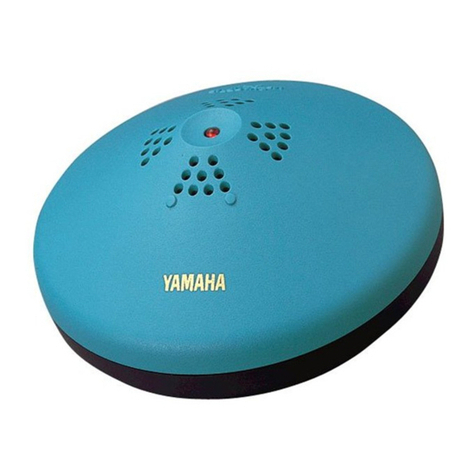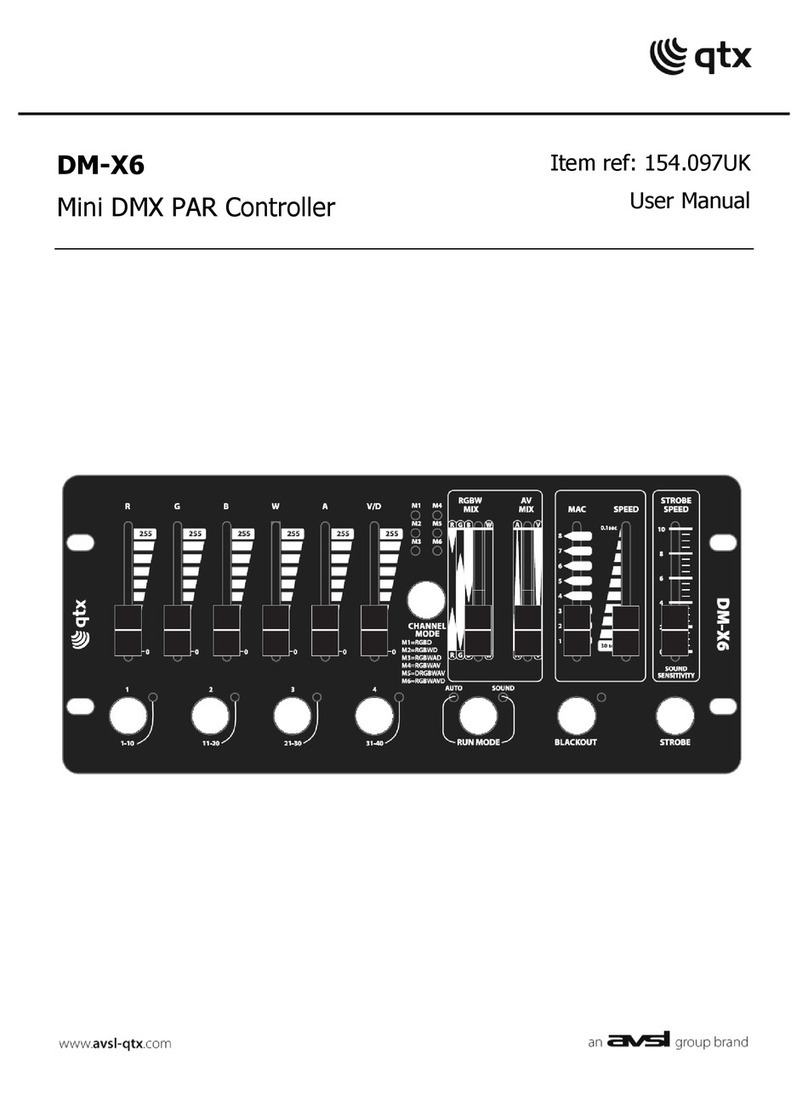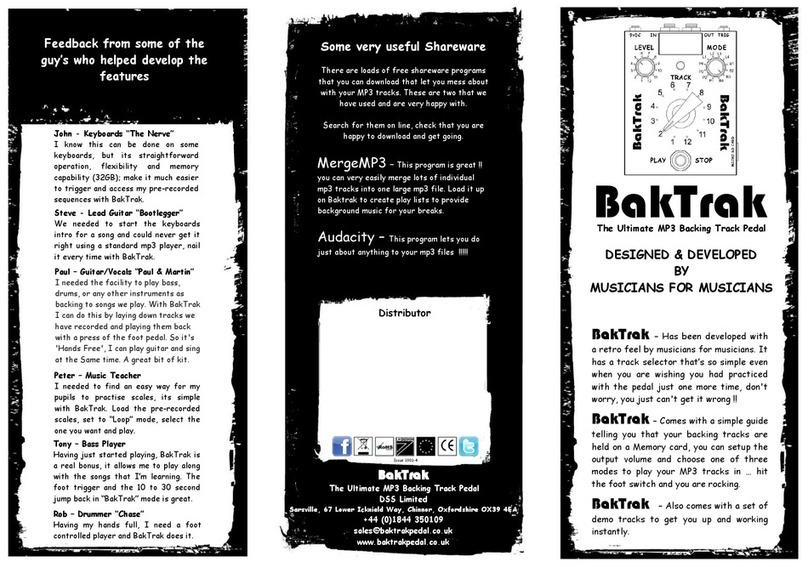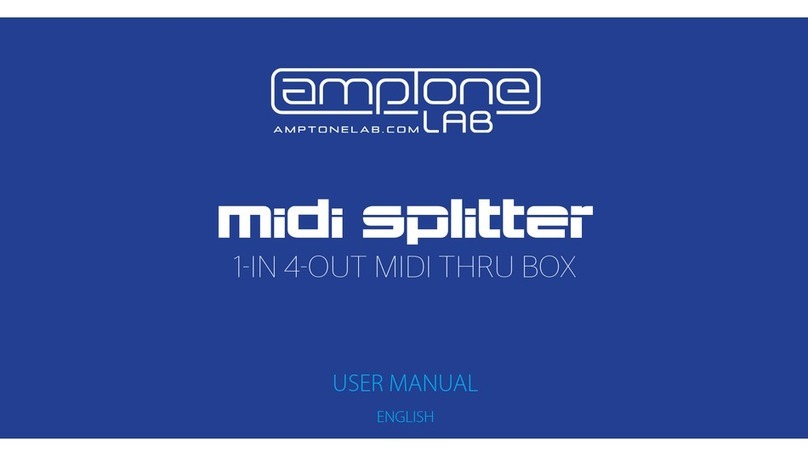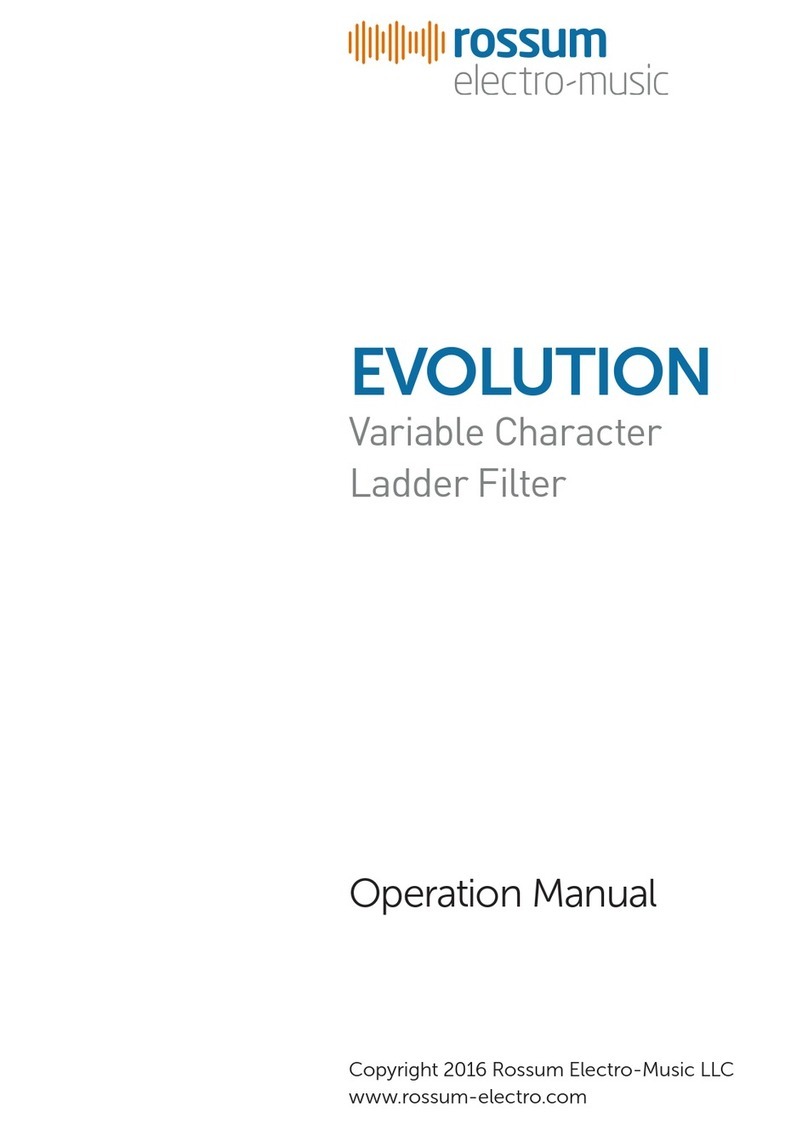Lexicon CORE-32 User manual

1 2 T S y s t e m U s e r G u i d e

Unpacking and Inspection
After unpacking the12T system modules, save all packing materials in case you ever need to ship the units. Thoroughly inspect the modules and
packing materials for signs of damage. Report any damage to the carrier at once; report equipment malfunction to your dealer.
Lexicon Part #070-12131
Copyright 1998, Lexicon Inc.
All Rights Reserved.
Printed in the U.S.A.
Lexicon Inc.
3 Oak Park
Bedford MA 01730-1441
Telephone 781-280-0300
Fax 781-280-0490
www.lexicon.com
Notice
Thisequipmentgeneratesandusesradiofrequencyenergyandifnotinstalledandusedproperly,thatis,instrictaccordancewiththemanufacturer's
instructions, may cause interference to radio and television reception. It has been type tested and found to comply with the limits for a Class A
computingdeviceinaccordancewiththespecificationsinSubpartJofPart15ofFCCRules,whicharedesignatedtoprovidereasonableprotection
against such interference in a residential installation. However, there is no guarantee that interference will not occur in a particular installation. If
this equipment does cause interference to radio or television reception, which can be determined by turning the equipment OFF and ON, the user
is encouraged to try to correct the interference by one or more of the following measures:
Reorient the receiving antenna
Relocate the computer with respect to the receiver
Move the computer away from the receiver
Plug the computer into a different outlet so that the computer and receiver are on different branch circuits.
If necessary, the user should consult the dealer or an experienced radio/television technician for additional suggestions. The user may find the
following booklet prepared by the Federal Communications Commission helpful:
"How to identify and Resolve Radio/TV Interference Problems."
This booklet is available from the U.S. Government Printing Office, Washington, DC 20402, Stock No. 004-000-00345-4.
Le présent appareil numérique n'émet pas de bruits radioélectriques dépassant les limites applicables aux appareils numériques de la class A
prescrites dans le Règlement sur le brouillage radioélectrique édicté par le ministère des Communications du Canada.
This triangle, which appears on
your component, alerts you to
the presence of uninsulated,
dangerous voltage inside the
enclosure...voltagethatmaybe
sufficient to constitute a risk of
shock.
CAUTION
RISK OF ELECTRIC SHOCKRISK OF ELECTRIC SHOCK
DO NOT OPENDO NOT OPEN
Thistriangle,whichappearson
your component, alerts you to
important operating and main-
tenance instructions in this ac-
companying literature.

1 2 T S y s t e m U s e r G u i d e


i
Table of Contents
1 Getting Started
Introduction .......................................................... 1
System Requirements .......................................... 1
Versions of Windows ..................................... 2
High Performance Systems ...........................2
SCSI vs. IDE ..................................................3
2 Installation
Precautions .......................................................... 5
Hardware Installation ...........................................6
Setup .............................................................6
Mount the PC-90 Card
onto the Core-32 Card .............................6
Attach the PCI Extender ................................5
Install the Core-32/PC-90 Assemby .............. 7
Connect the LDI-12T Interface
to Audio Sources...................................... 9
Software Installation ...........................................10
Install Supported Third Party
Audio Software....................................... 10
Install the ASIO Lexicon Studio Driver
for Windows 95 ...................................... 10
Install the PC-90 Software for Windows 95 . 10
System Connections .......................................... 11
Front Panel Connections ............................. 11
Rear Panel Connections ..............................12
Typical Configurations ................................. 12
3 Core-32 Basics
Signal Routing.................................................... 15
Core-32 Control Panel ....................................... 16
Ctrl I/O ......................................................... 17
Reverb ............................................................... 19
Punch Record .................................................... 22
Configuring the Punch Feature.................... 22
The Mix Level control...................................23
Timecode and Synchronization .......................... 24
Setting Up Cubase to Sync to Timecode..... 25
Setting the Audio Sync Clock Reference..... 25
Sample Rates .............................................. 26
Word Clock .................................................. 26
Word Clock Sources .................................... 27
Recording .................................................... 27
4 Using the PC-90
Basic Operation.................................................. 29
The Interface................................................ 29
Inserting a Plug-In........................................ 30
Routing an Audio Channel through
the PC-90............................................... 30
Selecting PC-90 and Making Settings ......... 31
Naming Effects ............................................ 33
Saving Effects .............................................. 33
Loading Effects ............................................ 34
Editing Effects .............................................. 34
Beyond the Basics ............................................. 35
Routing a Plug-In ......................................... 35
Automating the PC-90 ................................. 39

5 Reference
PC-90 Algorithms ............................................... 41
Ambience ..................................................... 41
Chamber ...................................................... 42
Concert Hall ................................................. 43
Inverse ......................................................... 43
Room ........................................................... 44
The Parameters ................................................. 45
Chorus ......................................................... 45
Crossover .................................................... 45
Decay........................................................... 45
Decay Lvl ..................................................... 45
Definition...................................................... 45
Diffusion....................................................... 46
Duration ....................................................... 46
Echo Delays................................................. 46
Echo Feedback ............................................ 46
Effects Mix ................................................... 46
HF Rolloff ..................................................... 46
Infinite .......................................................... 47
Input Lvl ....................................................... 47
Link .............................................................. 47
Mid RT and Bass Mult ................................. 47
Pre Delay ..................................................... 47
Range and Rate........................................... 47
Reverb Level................................................ 48
Reflect Delays.............................................. 48
Reflect Levels .............................................. 48
Shape, Spread............................................. 48
Size .............................................................. 48
Slope............................................................ 49
Spin.............................................................. 49
Treble Dcy ................................................... 49
Preset Descriptions ............................................ 50
Notes on Preset Design...............................50
Appendix A
Third Party Support ............................................A1
Steinberg Cubase VST ................................A1
Appendix B
Troubleshooting .................................................B1
Installation Troubleshooting.........................B1
PC Troubleshooting .....................................B2
Optimizing Windows 95 for
Audio Applications..................................B4
Common Problems and Solutions ...............B7
Poor System Performance...........................B8
Pops and Clicks ...........................................B8
Appendix C
Specifications .................................................... C1
ii


Lexicon Part #
070-12131
Lexicon Inc.
3 Oak Park
Bedford MA 01730-1441
Telephone 781-280-0300
Fax 781-280-0490
www.lexicon.com

1
1
Getting StartedLexicon Studio 12T System User Guide
Getting Started
Introduction
Thank you for your purchase of a Lexicon Studio system. Lexicon Studio provides a line of
professional hardware components for computers that provides uncompromised audio quality and
extensiveprocessingcapability.Thisfamilyofproductsisdesignedtoallowyoutotailoryourworking
environment to your needs. Lexicon Studio provides I/O options, DSP, signal routing, and synchro-
nization for industry leading software.
Although written to accommodate both novice and expert users, this manual assumes some
familiaritywiththesoftwareapplicationyouhaveselectedtointerfacewithLexiconStudio.Ifyouhave
questions concerning the use of your software application, refer to the manufacturer’s user manual
before using your Lexicon Studio system.
A “ReadMe”filecontaininglate-breakinginformationisprovidedondiskettewithyourLexiconStudio
system, along with On-Line documentation for the PC-90.
System Requirements
ThefollowingsystemisrecommendedastheminimumforworkingwithLexiconStudioandSteinberg
Cubase Audio VST:
• 166 MHz Pentium Processor or compatible equivalent (Please visit our Web site for the latest
information on compatibility.)
• 64 MB of RAM
• Audio-capable disk drive
• Microsoft Windows — 95™ or later
1

Getting Started
2
2
Lexicon
Versions of Windows
Lexicon Studio requires Windows 95 A or B. Studio is not compatible with Windows 95 V0. To
determine the version of Windows you are running, follow these steps:
1. In the Control Panel, double-click System.
2. Click the General tab.
3. Locate the version number under the System heading, then refer to the following table:
Version Version of Windows
4.00.950 Windows 95 V. 0
4.00.950A Windows 95 plus the Service Pack 1 Update, or OEM Service Release 1.
4.00.950B OEM Service Release 2 (OSR2)
4.00.950C OEM Service Release 2.5 (OSR2.5)
4.10.1650 Beta 3 Current Beta version of Windows 98
As of the release of this manual, Windows 98 was not released. Lexicon has, however, tested with
this version of Windows, and plans to support it on release. Upgrade to Windows 95 A, B or C, as
necessary.
High Performance Systems
Popular software packages like Cubase VST, Logic Audio and Digital Performer all show perfor-
mance improvements with high CPU speeds and additional RAM. A high performance system
benefits from the following:
• Fast CPU — Intel is the best PC choice. CPUs from other manufacturers often don’t perform as
wellatthesameratedclockspeedsandmayhavevariantimplementationsofimportantsections
like the FPU (Floating Point Unit).
• A system “boot” drive and a separate drive for audio
• A reliable video card with current drivers. Some cards offer acceleration done in such a way as
to“hog”thePCIbusandcreatedatalogjams.AcomputerofferingAGP(AdvancedGraphicPort)
capability for the graphics card is preferable as it gets the video off of the PCI bus.

3
3
Getting StartedLexicon Studio 12T System User Guide
SCSI Vs. IDE
Both SCSI and IDE offer distinct advantages:
Benefits Liabilities
SCSI fast bus performance, Use of a PCI card to
removable media interface to the computer
lots of choices of high increases bus traffic
performance drives
IDE: drives approach SCSI the IDE bus is slower
performance, inexpensive, (in most cases this is NOT
using the IDE bus the limiting factor)
decreases activity on the fewer model choices,
SCSI bus no removable media
AsystemthatusesSCSI(PCI)foraudioI/Otransfers,andIDEfordatatransferstoandfromthehard
drive, and the AGP port for graphics traffic wins the performance test. Adding a SCSI card and
removable media to transport jobs (copying them to and from the internal IDE drive) wins on
performance with the currently available technology. Stay tuned on our WEB site for the latest
recommendations as technology changes.

Getting Started
4
4
Lexicon

5
5
InstallationLexicon Studio 12T System User Guide
Installation
Depending on your computer, installation of your Lexicon Studio system should take about 20
minutes. Please read through the entire procedure before performing the installation.
Precautions
• Turn off and unplug your computer.
• Use the anti-static wrist strap provided with your system and make sure that you are grounded
during the entire installation process to prevent static charges that can damage components.
• Put the anti-static bags containing your cards near your computer to avoid walking around with
a card after it is removed from its bag (and generating static electricity).
• Before handling any Lexicon Studio cards, discharge any personal static electricity that may be
on your clothes or body by touching a grounded metal surface, such as the power supply case
inside your computer.
• Handle the cards only by their edges, as you would a CD. Avoid touching the pins on the bottom
edge of the cards.
• Save the anti-static bags containing your Core-32 System card and PC-90 module. These
preventstaticelectricityfromdamagingsensitiveelectroniccomponentsonthecards.Whenever
cards are removed from your computer, they should be stored in these bags.
2

Installation
6
6
Lexicon
Hardware Installation
Setup
1. Put on the anti-static wrist strap.
2. PlacethefoamfromyourLexiconStudiopackageontopofaworksurfacenexttoyourcomputer.
(Any flat piece of static-safe foam with similar dimensions to the Core-32 card can be used).
3. Make sure that you computer is properly shut down and unplugged.
4. RemovethecomputertopcoverandPCIslotcover(s)fortheslotsyou’vechosenforyourLexicon
Studio cards. If you do not know how to open your computer, consult your computer owner’s
manual.
5. Touch the computer power supply case to discharge any personal static electricity.
6. RemovetheCore-32fromitsanti-staticbag,holdingthecardonlybyitsedges.Becarefultoavoid
touching the pins on the bottom edge of the card. Place the Core-32 bag on top of the foam and
place the card on the foam with the white PC-90 connector facing up as shown below.
Mount the PC-90 card onto the Core-32 card
The PC-90 module can only be mounted onto a Lexicon Studio Core-32 system card. Attempting to
attach your PC-90 to any other type of PCI card may damage your PC-90 module.
1. Touch the computer power supply case to discharge any personal static.
2. Remove the PC-90 module from its anti-static bag, holding the card only by its edges. Place the
bagonyourworksurfacenexttoyourcomputerandplacethePC-90onitwithitswhiteconnector
facing up.
3. Pick up the PC-90 card and orient it so that the connector side faces away from the palm of your
hand.
4. Pick up the Core-32 card in your other hand. Orient the cards with their connector sides facing
eachother and align theconnectors at the top ofeach card. Firmly press the cards together until
they connect fully. The holes on the edges of the Core-32 card should be aligned with the
standoffs on the PC-90 card.

7
7
InstallationLexicon Studio 12T System User Guide
5. Once the cards are mated, place the assembly, with the Core-32 card on top, onto the Core-32
anti-static bag. Use the four screws provided to attach the PC-90 to the Core-32 card. Do not
overtighten the screws as you may damage the PC board.
Attach the PCI Extender
The extender provides support for cards installed horizontally and prevents boards from touching
each other and shorting. To attach the extender:
1. Holding the Core-32 assembly by its edges, align the holes of the board and the extender.
2. Inserttwoscrews (provided)from theback ofthe Core-32card asshown. Donot overtightenthe
screws, as you may damage the PC board.

Installation
8
8
Lexicon
Install the Core-32/PC-90 assembly
TheCore-32Systemcard must beinstalledin a full-sizePCIslotwhich isabusmaster. Refertoyour
computer owner’s manual to determine which slots are available as bus masters. (On some older
motherboards, the PCI slot next to the ISA bus connector [the PCI/ISA shared slot] is not a PCI bus
master slot.)
1. Touch the computer power supply case to discharge personal static.
2. Pickup theCore-32/PC-90 assemblyby the topof themetal bracket and the topof theother end
of the card.
3. Align the card assembly over the slot you’ve chosen and insert it.
4. Place one hand along the top edge of the card and push down firmly until the card is fully seated
in the slot. Do not use excessive force.
5. Oncethecardisfullyseated,attachtheCore-32brackettothecomputerchassiswiththescrews
provided with your computer. If you are standing the computer up, check to see that boards are
not bending and shorting against each other.
6. Replace the cover on the computer. Do not operate the system without the cover.

9
9
InstallationLexicon Studio 12T System User Guide
Connect the LDI-12T Interface to Audio Sources
Cables/Connections
1. Use only the proprietary Lexicon cable (provided) to connect the Core-32 card to the LDI-12T
Interface.
2. With both the computer and the LDI-12T powered down, attach the cable between the lower
connector on the back of the Core-32 card and the Computer port on the LDI-12T rear panel.
3. Connect the 9V connector to the AC Power port on the rear panel of the LDI-12T, and plug the
other end into a wall socket.
The LDI-12T supports various formats of analog and digital I/O. Make certain your cables are the
correct types prior to connection. (Analog XLR connectors are +4dBu balanced (Pin 2 hot) , analog
RCAconnectorsare–10dBVunbalanced).Toselectasourceforinputoroutputwithintheapplication
software, refer to the documentation provided with your particular software package

Installation
10
10
Lexicon
Software Installation
Install Supported Third Party Audio Software
Lexicon Studio requires compatible front-end software (such as Cubase Audio VST) to operate.
Please refer to your particular software installation guide for assistance. As Lexicon Studio installs
softwarewithin directoriesof your front-end software, youshould installyour audio softwarefirst and
verify that it launches properly before installing Lexicon Studio (even though it will not be audio-
capable until installation of the Lexicon Studio system).
Install the ASIO Lexicon Studio Driver for Windows 95
1. WiththeCore-32 assembly installed,power up yourcomputerand yourLDI-12Tinterface. Once
yourcomputerisfullybooted,Windows95willidentifyanewPCImultimediadevice(Intheevent
of booting problems, refer to the troubleshooting section of this manual).
2. InsertDisk1:LexiconStudioDrivers.Windows95willsearchthefloppydriveforthe.inffile.Once
this is found, click Finish.
3. Restart your computer.
In future versions of the Lexicon Studio drivers, the Installer will remove any prior versions of this
softwarefoundinyoursystemandplaceallcomponentsasrequired.Followingisalistoffilesinstalled
and their locations:
File Location
asiolex.dll C:\LxStudio
Core32.dll C:\LxStudio
Coredsp.pci C:\LxStudio
Corefpga.bin C:\LxStudio
Corev40.bin C:\LxStudio
Diagv40.bin C:\LxStudio
lxstudio.inf Installs as LexiconStudio.inf within
C:\Windows\Inf\Other
Core32.vxd C:\Windows\System
lexmtc.drv C:\Windows\System

11
11
InstallationLexicon Studio 12T System User Guide
Install the PC-90 Software for Windows 95
1. Insert Disk 2: PC-90 Software Disk
2. Open the disk and double-click on Setup.exe to launch the Installer.
3. Make certain that the Installer is directed toward the desired plug-in folders (example:
c:\..\Cubase Audio VST\vstplugins)
4. Click Next to install PC-90 software
5. Click Finish to complete the PC-90 software installation.
6. Restart your computer
InstallingthePC-90 softwarewill fileit withintheregistry. Toremove orupdate thissoftware,remove
thePC-90installbyusingtheAdd/RemoveProgramscontrolpanel,highlightingPC-90 Install,and
selecting Remove. This control panel is located at Start/Settings/Control Panel/Add/Remove
Programs.
System Connections
The Lexicon Studio 12T system has the following signal connections.
Front Panel Connections
• Two (2) analog +4dBu balanced XLR inputs (The stereo input is switchable between the +4dBu
output and the –10dBV input pair.)
• Two (2) analog -10 unbalanced RCA inputs
• Two (2) analog +4dBu balanced XLR outputs (pin 2 hot)
• One (1) S/PDIF pair RCA (coaxial) digital input/output
• One (1) balanced XLR Time Code input
LDI-12T
L
R
In
Out
S/PDIF
ANALOG OUT RL ANALOG IN RL
TIME
CODE
INPUT
POWER
PUSH
PUSH PUSH
PUSH
PUSH
PUSH

Installation
12
12
Lexicon
Rear Panel Connections
Two (2) optical TOSLINK™ connectors for input/output connection to 8-channel ADAT-compatible
format OR 2-channel Optical S/PDIF format
Two (2) ADAT sync D9 connectors
One (1) Word Clock input BNC connector (75 ohm termination)
One (1) Serial D9 connector
One (1) Power connection
One (1) Multi-pin computer connector
NOTE: TheBNCWordClockInputhasa75 ohm termination. Therefore, if you are distributing Word
Clock to a chain of devices, the LDI-12T must be last in the chain.
Typical Configurations
Following are some typical LDI-12T configurations. These are provided as a starting point, and to
familiarizeyouwiththepossibilitiesyoursystemprovides.Onceyoursystemisphysicallyconfigured,
signal routing is controlled by the Lexicon Studio Driver and the routing provided by your host
application program (Cubase VST, for example). Use of the Lexicon Studio Driver and examples of
typical host application routing is covered in the next section,
Signal Routing
.
SYNC IN SYNC OUT
OutIn
ADAT or S/PDIFADAT
COMPUTER
RS-422
AUDIO
POWER
WORD CLOCK IN
Other manuals for CORE-32
1
This manual suits for next models
1
Table of contents
Other Lexicon Music Equipment manuals
Popular Music Equipment manuals by other brands
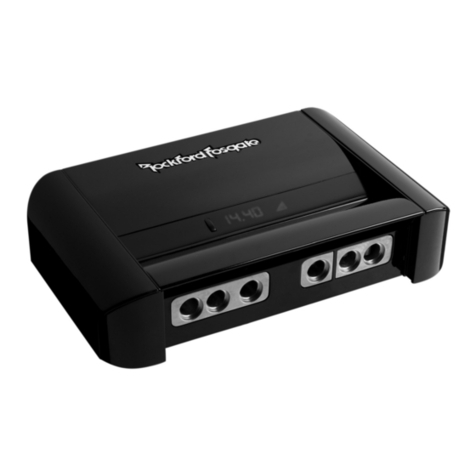
Rockford Fosgate
Rockford Fosgate RFC10HB Installation & operation
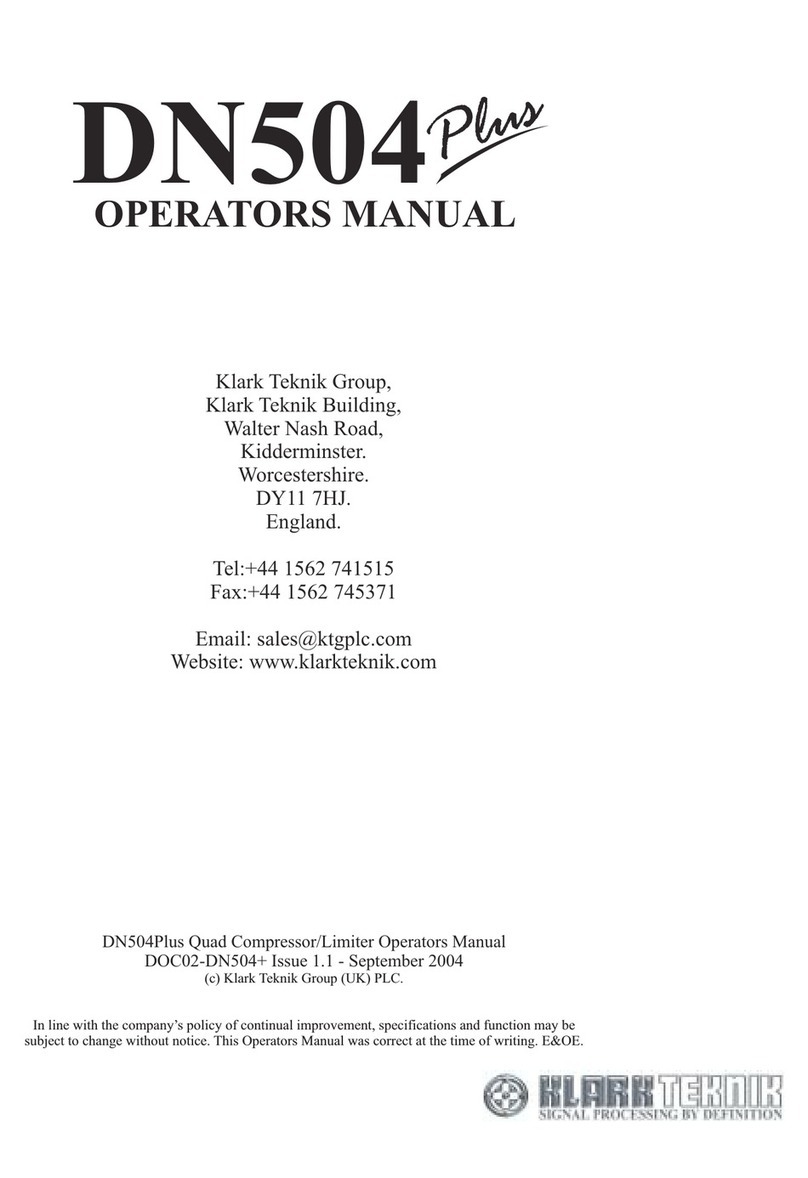
Klark Teknik
Klark Teknik DN504 PLUS Operator's manual

Clearaudio
Clearaudio Statement TT1 user manual

Monitor Audio
Monitor Audio platinum series II instruction manual
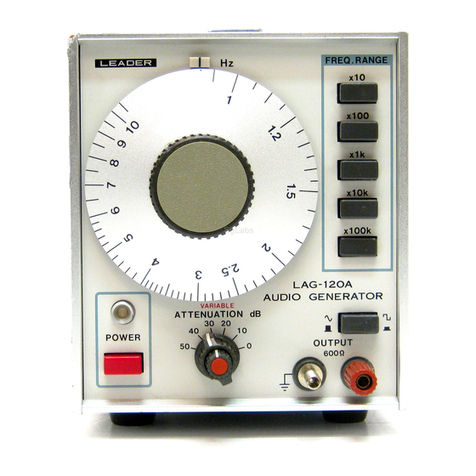
Leader Electronics Corp.
Leader Electronics Corp. LAG-120A instruction manual

Yamaha
Yamaha LS9 Editor Short cuts &tips
